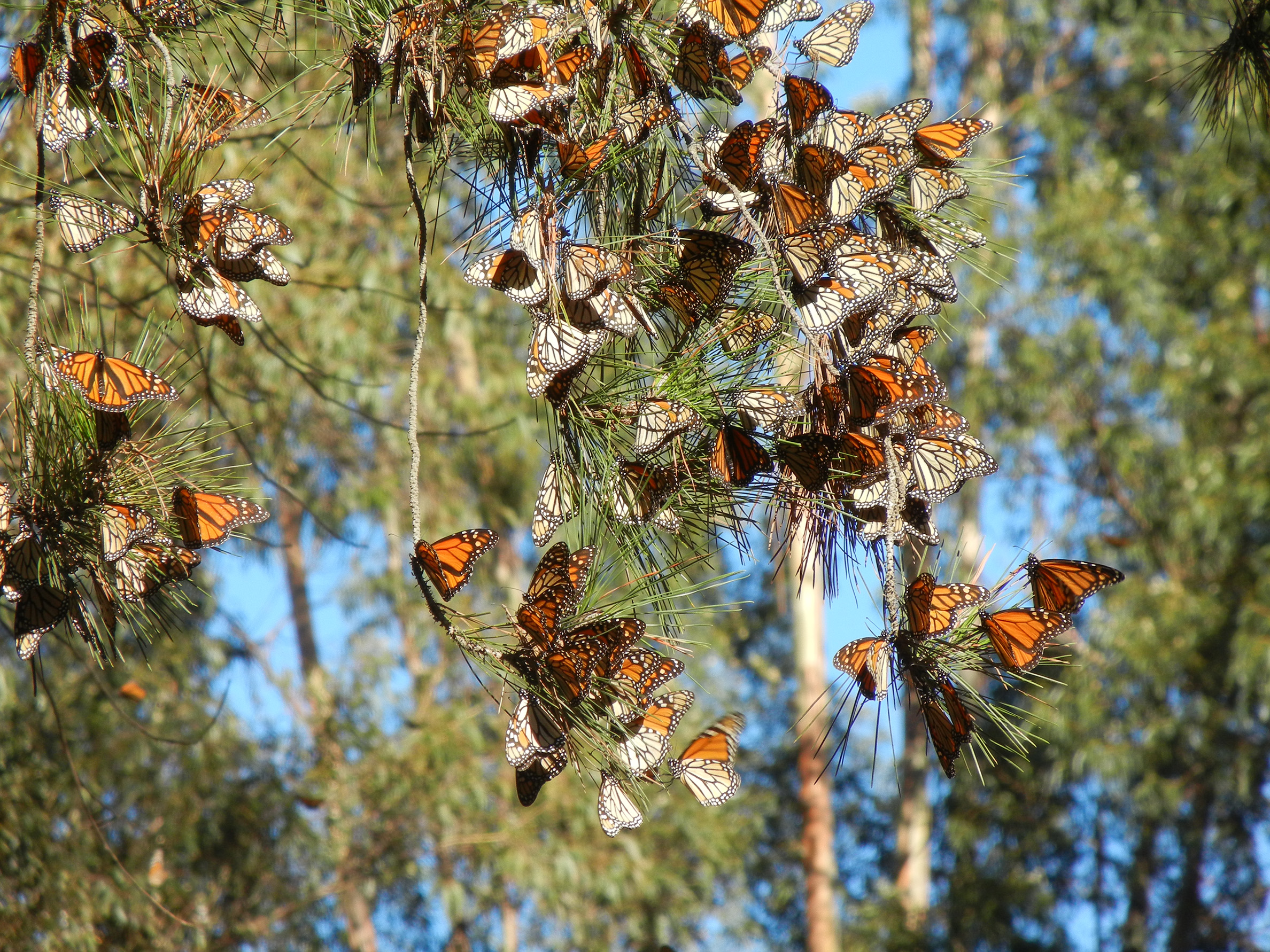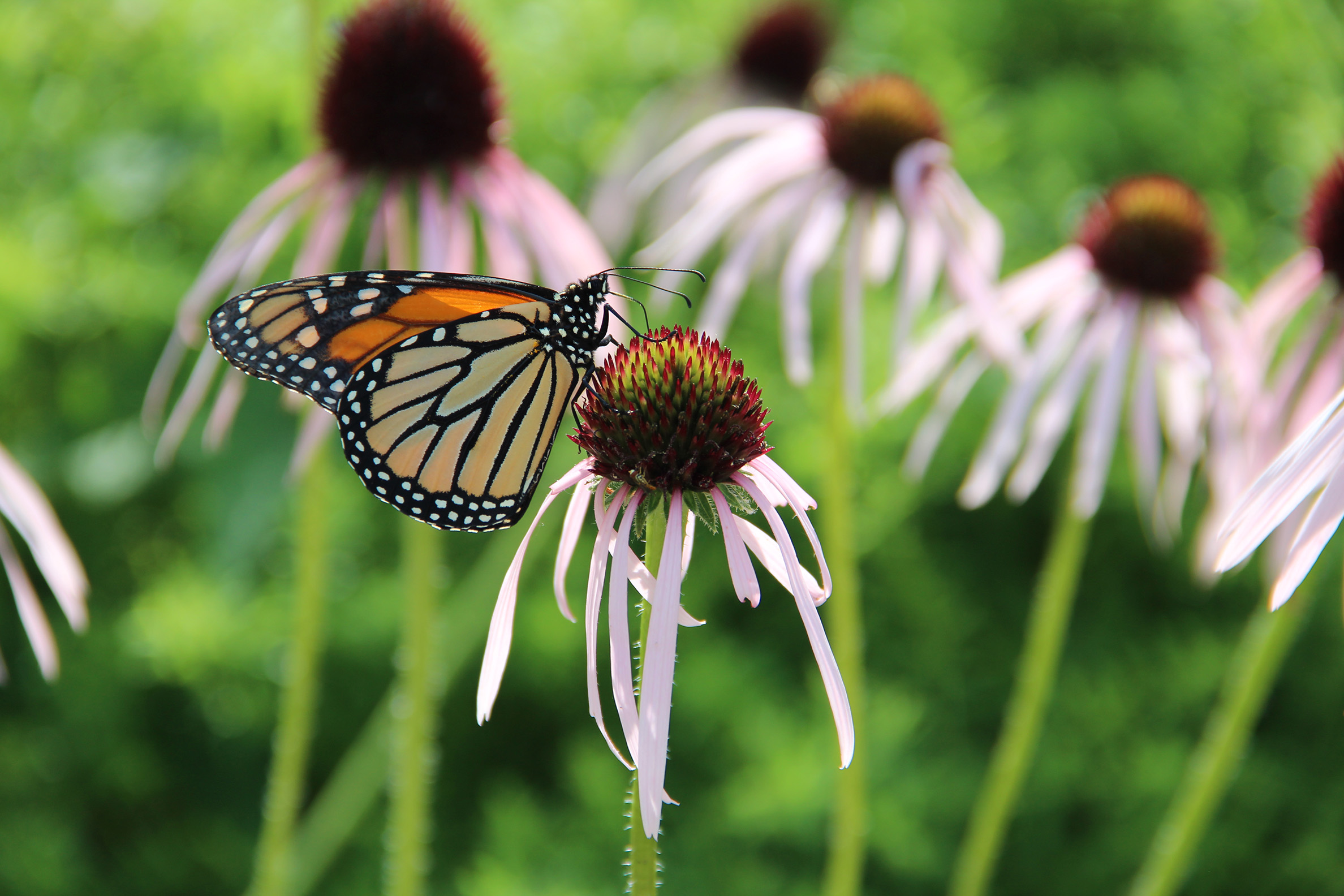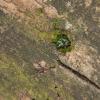Monarchs have been part of my life since I was small. Growing up in Omaha, Nebraska, they were the biggest, showiest butterflies in our neighborhood. My mom told me stories about when she lived in Arizona and they would show up each fall and “roost in some trees in the yard for a few weeks each year.” I moved to Colorado, where I didn’t see as many monarchs as I did in Nebraska, but I remember several sightings right up at the Continental Divide. Of course, since I came on as executive Director of the Xerces Society 20 years ago, monarch conservation has become a major part of my job.
Monarchs had been declining across the U.S. for some time before I got involved and Xerces has a long history of working to conserve them. Robert Michael Pyle, who founded the Xerces Society, helped describe the monarch migration as an “endangered phenomenon” and worked with others to highlight the monarchs’ plight. Melody Mackey Allen, who was Xerces Society Executive Director from 1984 to 2000, was originally hired to manage the society’s Monarch Project, which resulted in the first guidelines for managing overwintering groves. The Western Monarch Thanksgiving Count was launched in 1999, since when, sadly, it has documented the continuing declines.

The earliest project undertaken by the Xerces Society to help monarchs was focused on the migratory population that overwinters in California. (Photo: Xerces Society / Candace Fallon.)
If you have read my writings, you know I am not given to exaggeration or declaring that the “sky is falling!”—but the plight of the monarch cannot be overstated. In the West, we are on the verge of losing the monarch migration, which has crashed by 99.9%, and the eastern population may not be far behind. East of the Rocky Mountains, there were hundreds of millions on monarchs in the 1990s, but numbers have fallen by more than 80% since then. Studies at overwintering sites in Mexico this winter show that they continue to decline.
Although the situation is dire, we still have a path forward if we all step up and use a holistic conservation approach. Xerces follows just such an approach—using applied and community science to shape our education and outreach, guide our technical assistance, and inform our advocacy and policy work.
First and foremost, Xerces is a science-based conservation organization and our work on monarchs is no different. We work with academic scientists to understand the severity of the population declines and more importantly, what actions will likely lead to recovery. Our work extends across the range of the monarch in North America. Whether it is determining the best methods to restore overwintering sites in California, how to create high-quality monarch habitat in New York State, or by what means we can protect monarchs from toxic pesticides, our applied research maximizes our conservation return. Xerces also harnesses the enthusiasm and skill of thousands of community scientists to help us gather data. Thanks to our Western Monarch Thanksgiving Count and the Western Monarch Milkweed Mapper project, we better understand where monarchs live, the habitats they need to survive, and the conservation actions that will be most effective to conserve them. These community science efforts also have an additional benefit: Many of our community scientists become outspoken advocates for conservation and amplify our messages in their own communities.

Xerces Society staff are working on all aspects of monarch conservation—from habitat creation to pesticide reduction to advocacy—and all stages of its life cycle. We collaborated with native plant producers to expand the range of milkweed species for which seeds are available to include lesser-known but important species such as woollypod milkweed. (Photo: Xerces Society / Scott Black.)
Amplifying our conservation science message is vital if we hope to save the monarch migration. Xerces has proven outreach and education mechanisms to help make monarch conservation science accessible to the public. We create solutions and ensure they are suitable for farmers, park managers, gardeners, educators, and policy makers—and for each we craft messages that resonate. As part of this effort we produce high-quality, science-driven publications; our latest is 100 Plants to Feed the Monarch, which was just published by Storey Publishing.
In the last decade, we have directly engaged with over 140,000 people though workshops and other events, and we reached hundreds of millions through media, social media, and other forms of remote outreach. With our guidance, our Bee City USA and Bee Campus USA affiliates reached more than 800,000 people last year. Monarchs deserve our best efforts, and we are trying to make conservation accessible and achievable by all communities.
Xerces is also a leading advocate for invertebrates. We were a key player in the Endangered Species Act petition which led to a much-increased effort to conserve monarchs. Despite this, there is more work to do. Against all evidence, the U.S. Fish and Wildlife Service decided that while monarchs meet the criteria for protection as a threaten species, they are not a high-enough priority to actually be protected. Monarchs were wait-listed as their populations continue to drop.

Monarch butterflies once graced prairies and gardens in great numbers. Their populations have plunged. (Photo: Jennifer Hopwood.)
However, we are not waiting around until monarchs gain protection to push for conservation action. In March, we worked with Senator Jeff Merkley and Congressmen Jimmy Panetta and Salud Carbajal to introduce the MONARCH Act of 2021. If passed it will provide $25 million per year for five years for grants for western monarch conservation, a substantial federal investment in conservation that can help prevent further decline and move us a long way toward long-term population stability. Additionally, we helped author and are pushing for passage of the Monarch and Pollinator Highway Protection Act of 2021, which would provide $25 million to improve roadside management and restoration for monarchs and the many other pollinators.
Across the U.S., we have staff dedicated to monarch conservation—working to protect and restore habitat, guide conservation management, and inspire people to act. Our holistic efforts are focused on providing high-quality habitat for monarchs and other invertebrates. To date our work has led to the protection and restoration of over 2.5 million acres of habitat and the adoption of policies and practices that are helping invertebrates (including monarchs) across hundreds of millions of acres.
With your help and a holistic approach we can ensure monarchs remain a part of our lives. For more on how you can help please visit our website.
Further Reading
Learn about Monarch Butterfly Conservation.
Find a community science project that you can participate in.
Which milkweeds should you plant? Learn more at Project Milkweed.
Read more articles from our blog about our work to protect monarchs.



